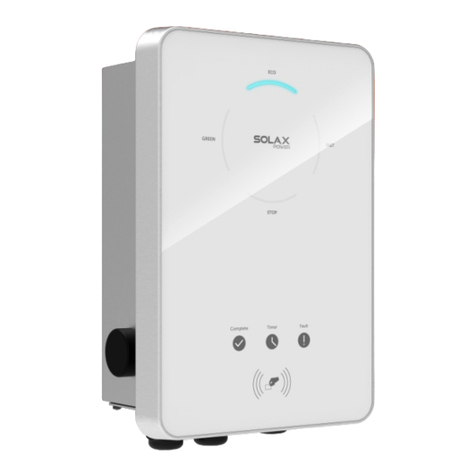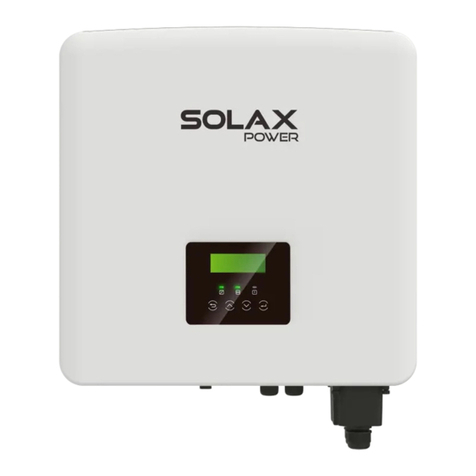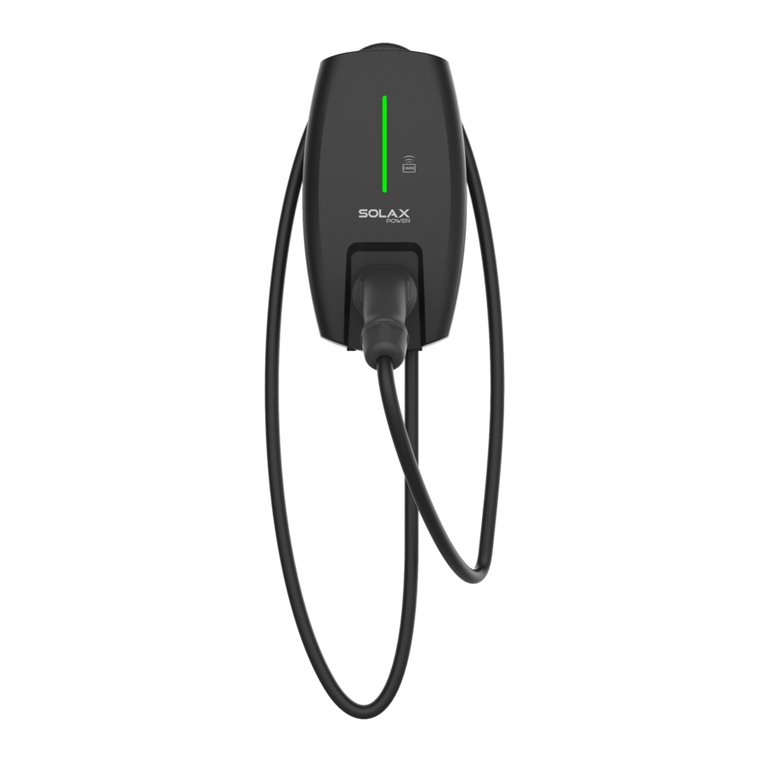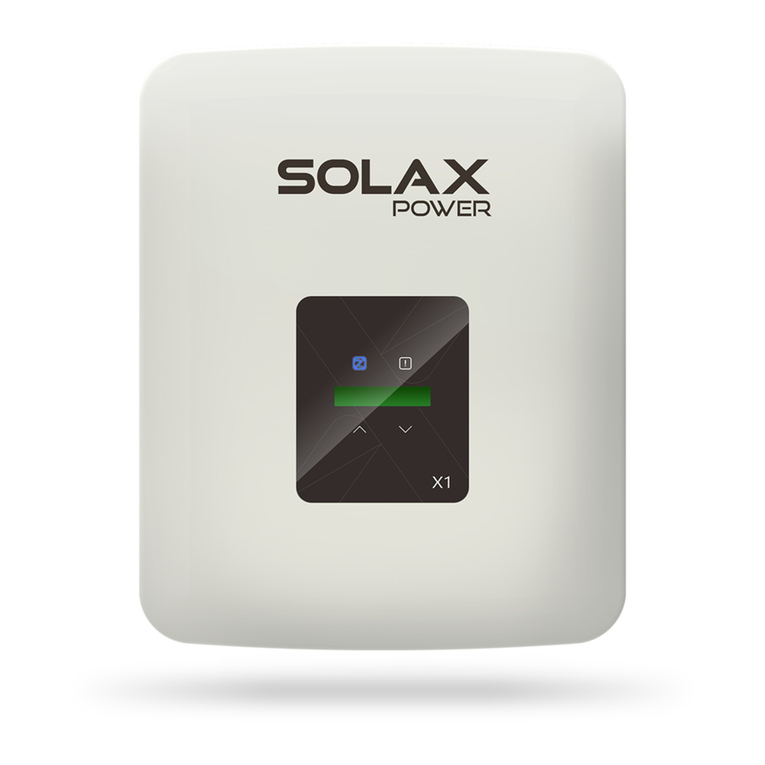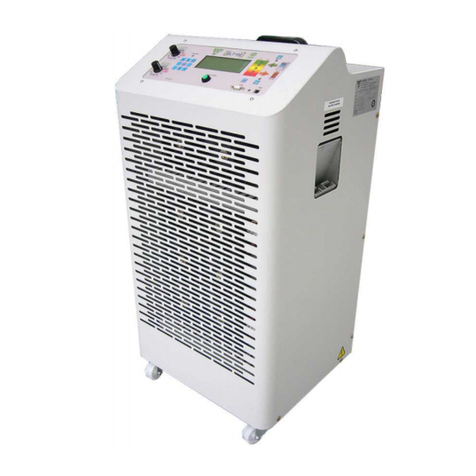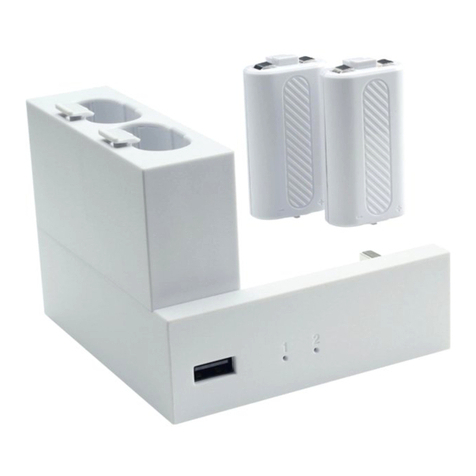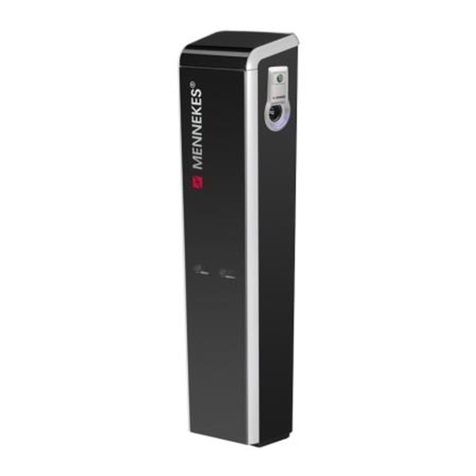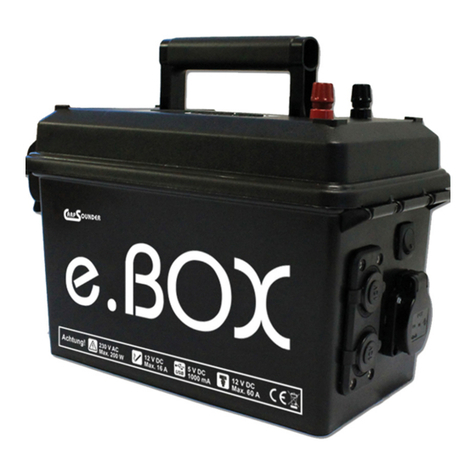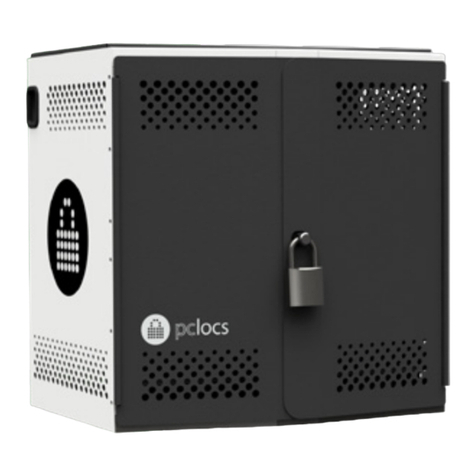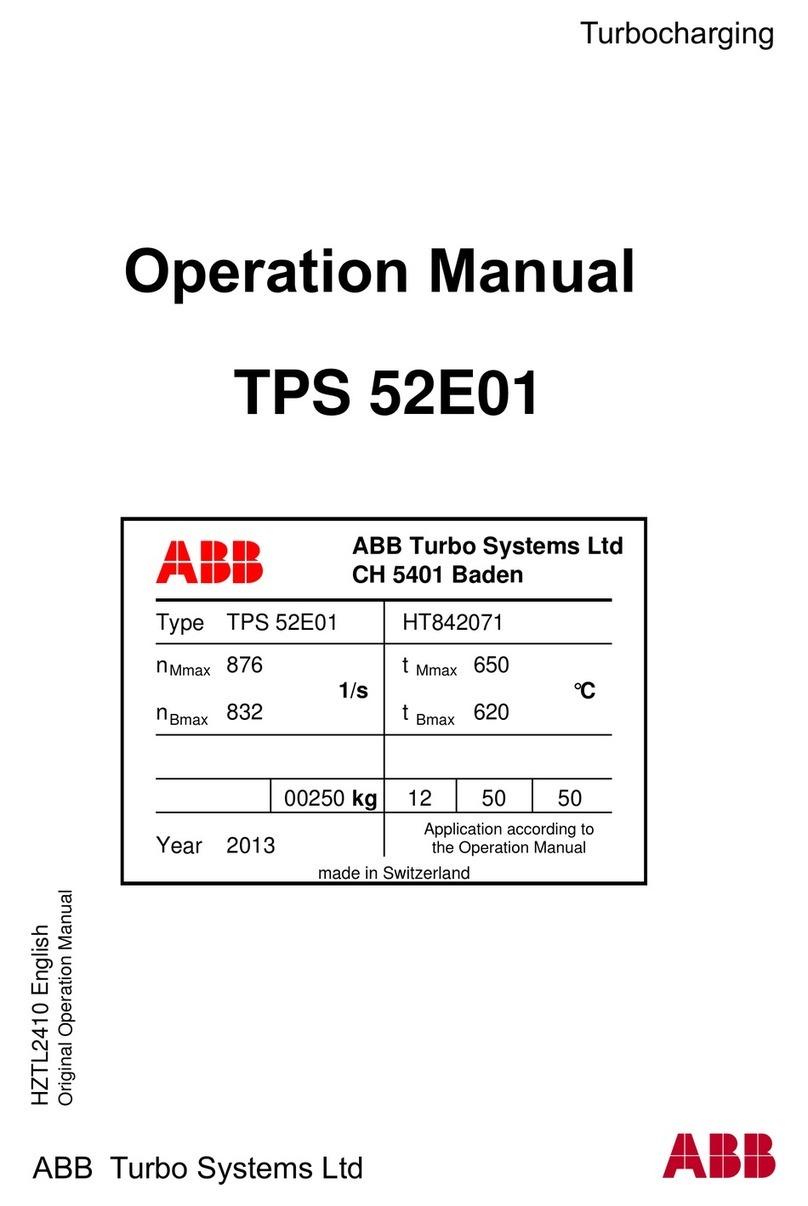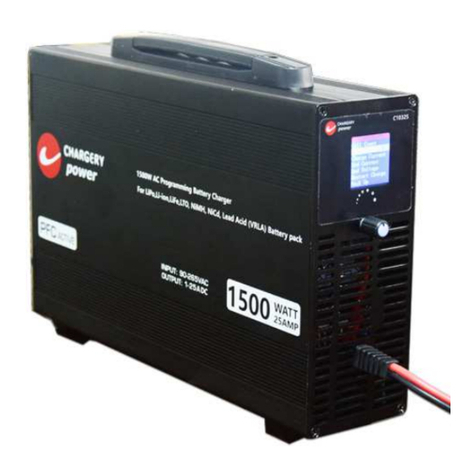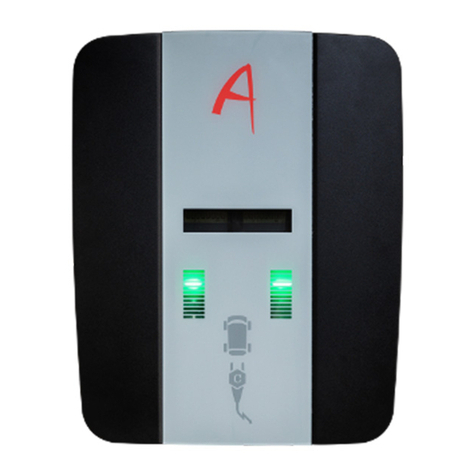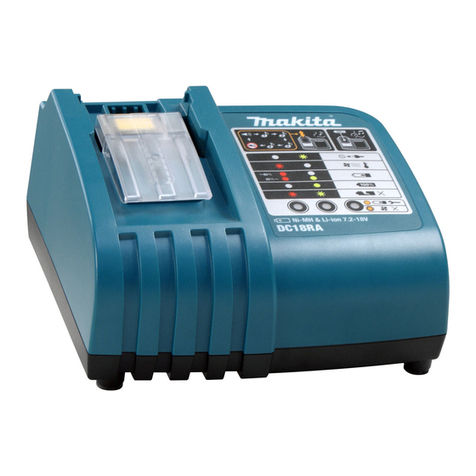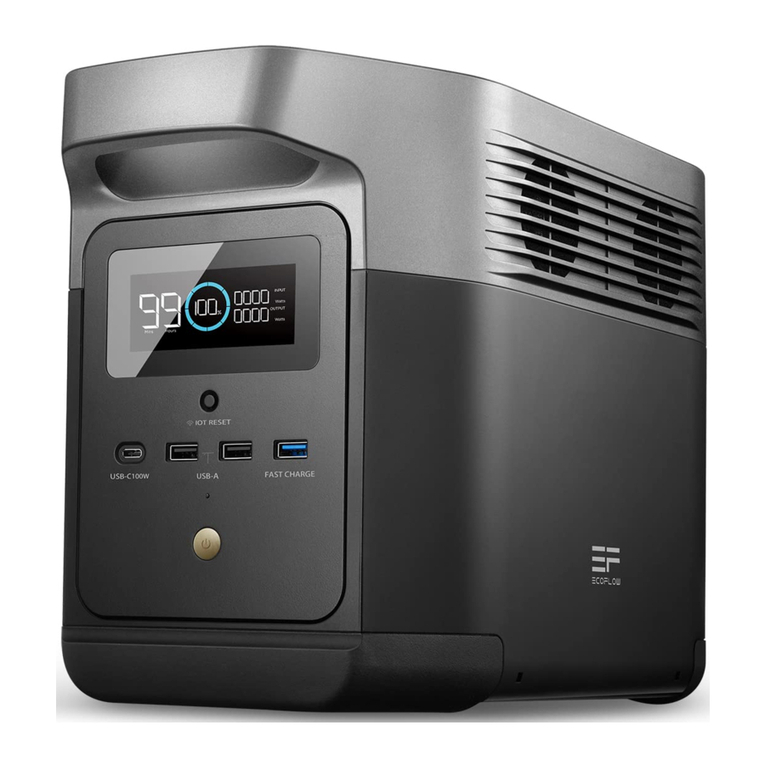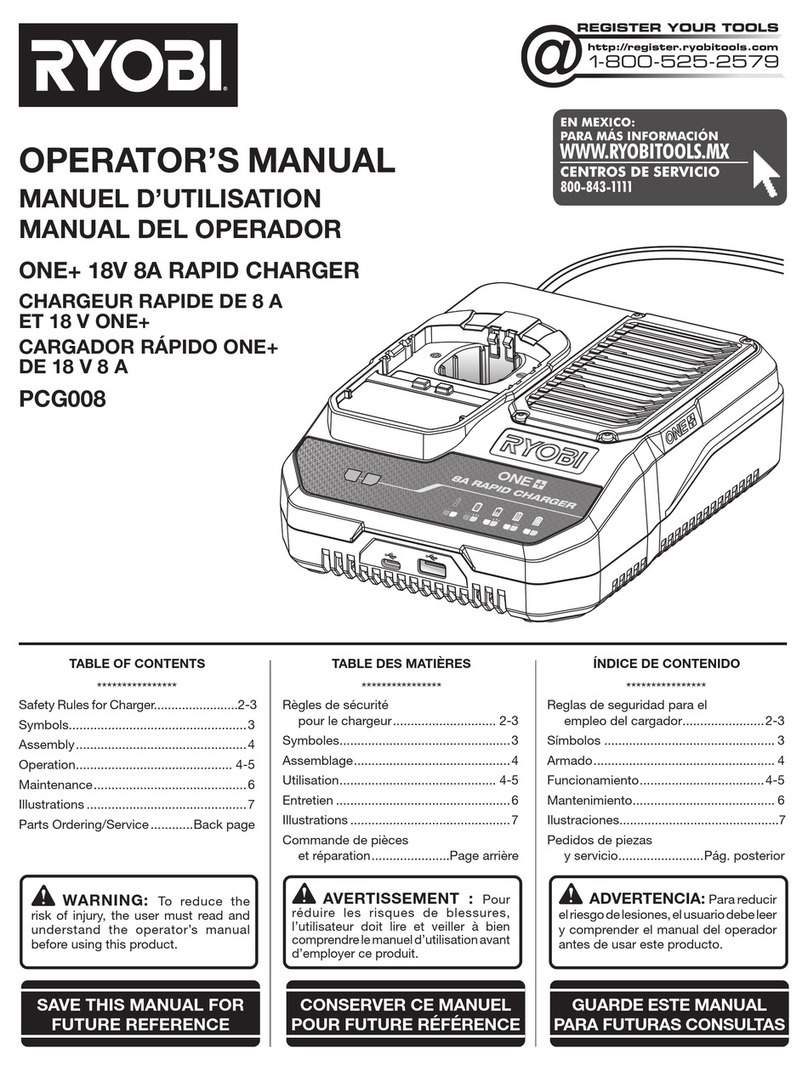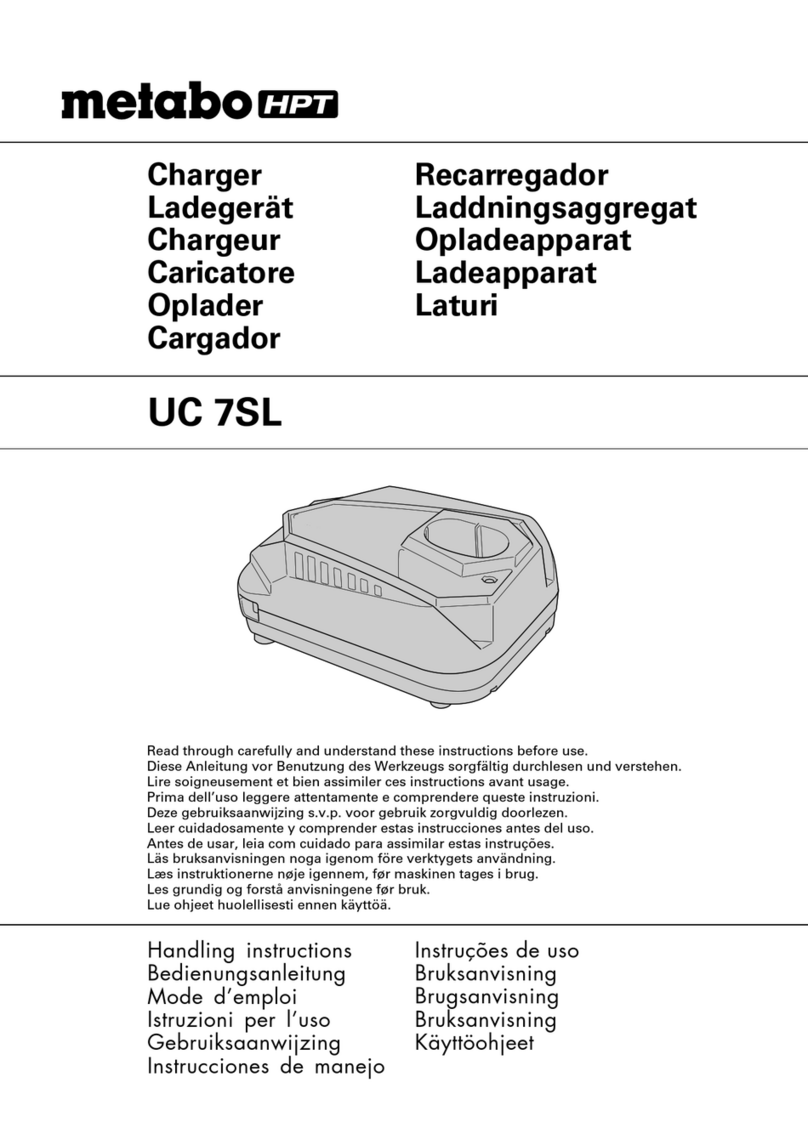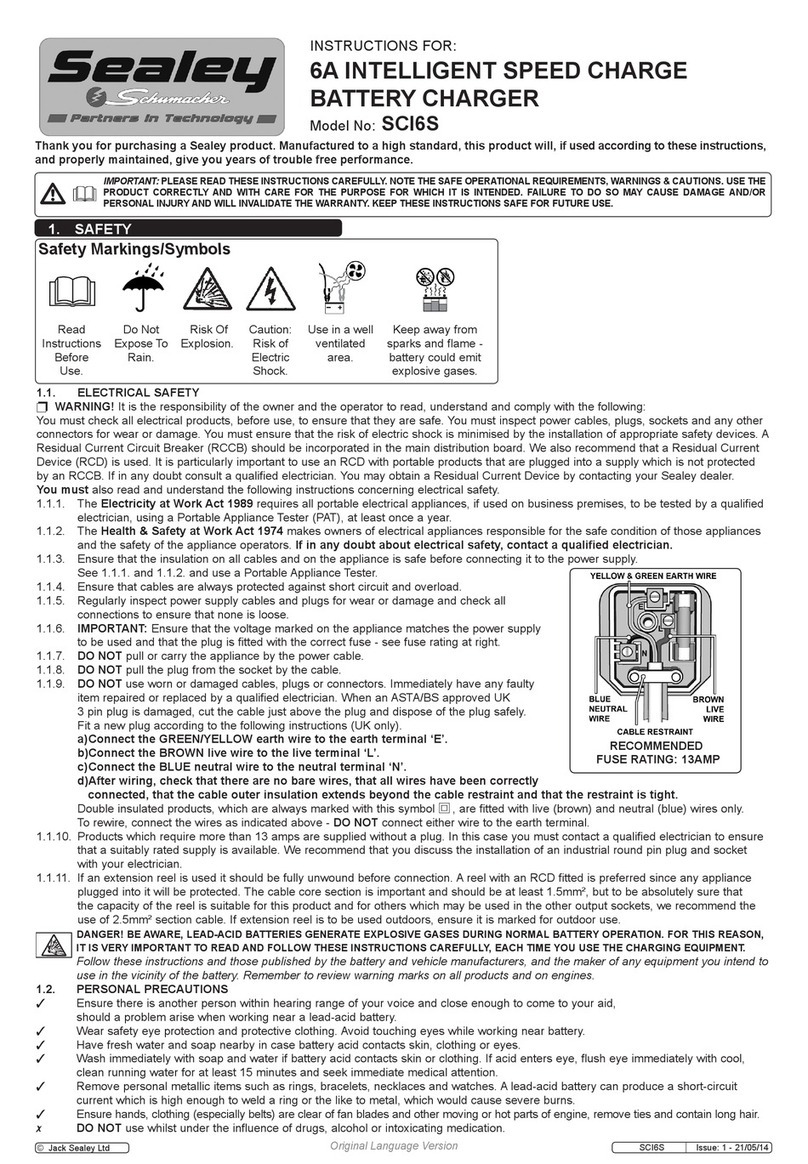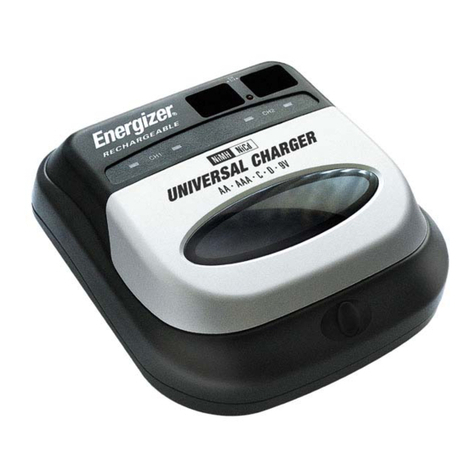SolaX Power X1-EVC-7.2K User manual

614.00623.00
SolaX Power Network Technology (Zhejiang) Co., Ltd.
EV-Charger User Manual
7.2 kW - 22 kW
Copyright Declaration
The copyright of this manual belongs to SolaX Power Network Technology (Zhejiang) Co., Ltd.
Any corporation or individual should not plagiarize, partially or fully copy it (including
software, etc.), and no reproduction or distribution of it in any form or by any means shall be
allowed. All rights reserved. SolaX Power Network Technology (Zhejiang) Co., Ltd. reserves the
right of final interpretation.
ADD.: No. 288 Shizhu Road, Tonglu Economic Development Zone,
Tonglu City, Zhejiang Province, China.
TEL.: +86 571-56260011
E-mail: info@solaxpower.com

Contents
01
Contents
1 Note on this Manual
1.1 Scope of Validity
1.2 Target Group
1.3 Symbols Used
2 Safety
2.1 Appropriate Usage
2.2 Important Safety Instructions
2.3 Explanation of Symbols
3 Introduction
3.1 Basic Features
3.2 Dimension
4 Technical Specification
4.1 General Data
4.2 Security Protection
5 Installation
5.1 Check for Transport Damage
5.2 Packing Lists
5.3 Installation Precaution
5.4 Installation Steps
5.5 CT Connection
5.6 Run the EV-Charger
6 Operation Method
6.1 Control & Indicators
6.2 Status
6.3 GREEN Mode
6.4 ECO Mode
6.5 FAST Mode
6.6 Smart Boost
6.7 Timer Boost
03
03
03
03
04
04
06
07
08
08
09
11
11
12
13
13
13
14
15
24
27
27
28
29
30
30
31
31
26

1.1 Scope of Validity
This manual is an integral part of the EV-Charger Series. It describes the
assembly, installation, commissioning, maintenance and failure of the product.
Please read it carefully before operating.
1 Notes on this Manual
Notes on this Manual
03
02
DANGER!
“Danger” indicates a hazardous situation which, if not avoided,
will result in death or serious injury.
WARNING!
“Warning” indicates a hazardous situation which, if not avoided,
could result in death or serious injury.
CAUTION!
“Caution” indicates a hazardous situation which, if not avoided,
could result in minor or moderate injury.
NOTE!
“Note” provides tips that are valuable for the optimal
operation of your product.
7 Troubleshooting
7.1 Troubleshooting
7.2 Routine Maintenance
8 App Setting
9 Decommissioning
9.1 Dismantling the Inverter
9.2 Packaging
9.3 Storage and Transportation
9.4 Disposing of the EV-Charger
10 Disclaimer
* Warranty Registration Form
Contents
32
32
34
36
42
42
42
42
42
43
X1-EVC-7.2K X3-EVC-11K X3-EVC-22K
Note:
”X1” means single-phase, ”X3” means three-phase.
”EVC” means “EV-Charger”.
“7.2K” means 7.2 kW, “11K” means 11 kW, “22K” means 22 kW.
The product can be socket type (only socket outlet) or plug type (with charging
cable and connector). It can be with or without LCD screen.
Keep this manual at where it is accessible all the time.
1.2 Target Group
This manual is for qualified electricians. The tasks described in this manual can
only be performed by qualified electricians.
1.3 Symbols Used
The following types of safety instructions and general information appear in this
document as described below:

2 Safety
2.1 Appropriate Usage
The EV-Charger Series are AC EV charger, intended to be installed in a fixed location
and connected to the AC supply.
05
04
SafetySafety
Apply for X1-EVC-7.2K (Single-phase) Apply for X3-EVC-11K/22K (Three-phase)
Electrical
grid
other home Load
PV array
Electricity meter,
bidirectional
Three-phase Inverter
L1
N
L2
L3
AC breaker
PE
Electrical
grid
other home Load
PV array
AC breaker
Single-phase Inverter
CT
Electricity meter,
bidirectional
L
N
PE

Prior to the application, please read this section carefully to ensure correct and
safe application. Please keep the user manual properly.
Use only accessories recommended or sold by SolaX. Otherwise may result in a
risk of fire, electric shock, or injury to person.
Make sure that existing wiring is in good condition and that wire is not
undersized.
Do not disassemble any parts of the EV-Charger which are not mentioned in
installation guide. It contains no user-serviceable parts. See Warranty for
instructions on obtaining service. Attempting to maintain the EV-Charger Series
by yourself may result in a risk of electric shock or fire and will void your warranty.
Keep away from flammable, explosive materials to avoid fire disaster.
The installation place should be away from humid or corrosive substance.
Safety Safety
2.3 Explanation of Symbols
This section gives an explanation of all the symbols shown on the EV-Charger type
label.
Symbol Explanation
CE mark.
The EV-Charger complies with the requirements of the applicable
CE guidelines.
Danger of high voltages.
Danger to life due to high voltages in the EV-Charger!
Danger.
Risk of electric shock!
The EV Charger can not be disposed together with household waste. -
Used electrical devices must be collected separately and recycled in
an environmentally responsible manner. Ensure that you return your
used device to your dealer or obtain information regarding a local,
authorised collection and disposal system.
The EV-Charger can be recycled.
2.2 Important Safety Instructions
CAUTION!
Danger of burn injuries due to hot enclosure parts!
During operation, the EV-Charger may become hot.
CAUTION!
Incorrect operation or misuse may result in:
Injury or death to the operator or third parties.
Damage to the device and other property of the operator.
Inefficient operation of the device.
DANGER!
Danger to life due to output and input high voltages in this
device!
All work must be carried out by qualified electrician who
has knowledge of and experience in dealing with electrical
installations.
The device is not to be used by children or persons with reduced
physical sensory or mental capabilities, or lack of experience and
knowledge, unless they have been given supervision or
instruction.
Children should be supervised to ensure that they do not play
with the device.
Risk of electric shock!
WARNING!
Authorized service personnel must use insulated tools when installing or working
with this equipment.
Do not use the EV-Charger in case the device has defects, crack, abrasion, bare
leakage and so on. Please contact the working staff in case of above conditions.
In case any emergency condition happens, please press the emergency stop
button immediately, cut off all input and output power supply.
During charging, the electric vehicle is not allowed to drive. Charging only when
the electric vehicle stays still. For Hybrid car, charging only when switching the
engine off.
0706

3. Introduction
3.1 Basic Features
Introduction
Thanks for purchasing with the SolaX EV-Charger Series. The SolaX EV-Charger
Series can be used for charging your electric vehicle in your home. Also you can
choose single or three phase with plug or socket type, you can consult our
salesmen for specific details. The features of the SolaX EV-Charger Series are
listed as below.
ŸCharging cable with type 2 connector or socket outlet selectable
ŸBuilt-in 30 mA type A RCD and 6 mA DC protection
ŸIntegrated with PEN protection and no earth rod
ŸEncrypted communication based on TLS
ŸIndoor and outdoor easy installation
ŸExport Power Control with SolaX system
ŸCapable with 100% green energy generated from your solar generation
ŸMultiple work modes to fit different situations
ŸIntegrated RFID function
ŸRemote setting and monitoring with APP and website
ŸSmart dynamic load balance control
ŸSet timers to reduce your cost during peak and valley price
3.2 Structure of the EV-Charger
Ø
Dimension
155.00 mm
0908
Type S
Introduction
249.00 mm
370.00 mm

4. Technical Data
4.1 General Data
Introduction Technical Data
Model X1-EVC-7.2K X3-EVC-11K X3-EVC-22K
AC Nominal Input
Phases/Lines
Voltage
Frequency
AC Nominal Output
Current
Voltage
Power
single phase/L1+N+PE 3 phase/L1+L2+L3+N+PE
230 V a.c. 400 V a.c. 400 V a.c.
50 Hz/60 Hz
230 V a.c. 400 V a.c. 400 V a.c.
32 A a.c. 16 A a.c. 32 A a.c.
7200 VA 11000 VA 22000 VA
Interface
RFID
RS485
LCD Screen
CT Clamps
YES
YES
Optional
x1
YES
YES
Optional
x3
YES
YES
Optional
x3
Housing Material
Installation Method
Wall-mount Bracket
Cable Length
Operating Temperature
Working Humidity
YES
Wall-mount
Plastic/Metal
6.5 Meters
-30℃~ +50℃
Working Altitude
Degree of Protection
Application Site
Cooling Method
0%~100%
<2000 m
IP65
Indoor/Outdoor
Natural cooling
Protection Class Class I
10 11
Type P
3 phase/L1+L2+L3+N+PE
50 Hz/60 Hz 50 Hz/60 Hz
Charging Outlet Charging Cable with Connector( Type 2)/Socket Outlet
Dimension[W*H*D](mm)
Net Weight(kg)
370 mm
155 mm
265 mm
249*370*155(for type S)/265*370*155(for type P)
7(for type S)/10.5(for type P)
Communication Info
EIRP Power
Frequency
Antenna Gain
Antenna Type
Wireless Mode
17.41 dBm(Measured Max. Average)
2.4 GHz
3 dBi
IPEX
802.11 b/g/n
WiFi
Communication Mode

BCD
A
H.2
E
5. Installation
5.1 Check for Transport Damage
5.2 Packing List
Make sure the EV-Charger is intact during transportation. If there are some
visible damages, such as cracks, please contact your dealer immediately.
Open the package and fetch out the product, check the accessories at first.
The packing list is shown as below.
Technical Data Installation
Object
EV-Charger
1
A
B
C
D
E
F
3/6
3/6
1
Expansion bolt (3 for type S, 6 for type P)
Self tapping screw (3 for type S, 6 for type P)
Manual
Quantity Description
European terminal
(3 for single phase; 5 for three phase)
3/5
1CT (H.1 for single phase; H.2 for three phase)
12 13
4.2 Security Protection
30 mA Type A RCD (EN 61008) + 6 mA DC protection (EN 62955)
Integral Earth Leakage
Protection Integral
Safety Standard
Built-in PEN fault technology
Warranty
IEC61851-1; IEC62196-2
YES
3 years
G
J
G
Over/Under voltage protection
Model X1-EVC-7.2K X3-EVC-11K X3-EVC-22K
Multiple Protection
Overload protection
Short circuit protection
Current leakage protection
Grounding protection
Surge protection
Over/Under temperature protection
YES
YES
YES
YES
YES
YES
YES
I
H
1
1RJ 45 terminal adapter
Cable hook (for type P)
F
1Quick Installation Guide
I
EV-Charger 7.2 kW-22 kW
EV-Charger User Manual
7.2 kW - 22 kW
Copyright Declaration
The copyright of this manual belongs to SolaX Power Network Technology (Zhejiang) Co., Ltd.
Any corporation or individual should not plagiarize, partially or fully copy it (including
software, etc.), and no reproduction or distribution of it in any form or by any means shall be
allowed. All rights reserved. SolaX Power Network Technology (Zhejiang) Co., Ltd. reserves the
right of final interpretation.
H.1
3/6 Gasket (3 for type S, 6 for type P)
J

5.3 Installation Precaution
Available Space Size
The EV-charger is designed for wall-mounted installation (IP 65).
Make sure the installation site meets the following conditions:
· Not exposed to sunlight directly.
· Not in areas where highly flammable materials are stored.
· Not in potential explosive areas.
· Not near the television antenna or antenna cable.
· Not higher than altitude of about 2000 m above sea level.
· Not in environment of precipitation or humidity(5%~95%) .
· Make sure that the ventilation is good enough.
· The ambient temperature in the range of -30℃~ + 50℃.
· The slope of the wall should be within ±5°.
Position Min.size
Ø
Left 300 mm
300 mm
200 mm
1.2-1.5 m
300 mm
Right
Top
Bottom
Front
Table: Available Space Size
Installation Installation
The wall on which the EV-charger will be installed should meet the conditions below:
1) Solid brick/concrete, or strength equivalent mounting surface;
2) EV-charger must be supported or strengthened if the wall’s strength isn’t enough
(such as wooden wall, the wall covered by thick layer of decoration).
300 mm 300 mm
200 mm
1.2-1.5 m
14
5.4 Installation Steps
STEP 1: Remove the screw from the EV-Charger with the cross screwdriver. Then
remove the back bracket away carefully.
No direct sunlight No Rain Exposure No snow Lay up
Direct Sunlight Rain Exposure Snow Lay up Stay away from
antenna cables
Stay away from
combustibles
15
Preparation
Below tools are needed before installation.
Stripping pliers Wire crimper Cross screwdriver Straight screwdriver
φ 6 drill
Prepare a communication cable with RJ45 and a three-core or ve-core input
cable with φ13-18 mm outer diameter.
●
●

STEP 2: Fix the back bracket and the cable hook (only for type P) to the wall.
- Mark the position of the holes. - Insert the expansion bolts.
- Drill holes with φ 6 drill.
- Depth: at least 45 mm.
- Align the bracket and the cable hook(only
for type P) with the holes, and screw the self
tapping screws with the cross screwdriver.
Installation Installation
STEP 3: Hang the EV-Charger on the wall for trial, then estimate the required length of
input cable and communication cable. After that, take the EV-Charger down.
STEP 4: Unscrew the EV-Charger’s rear cover with the cross screwdriver and take it down.
Then undo the fastening heads and take the waterproof materials away as shown below.
16 17
(torque:1.5~2 N·m)

STEP 5: Unscrew the countersunk screw of the base plate of communication board
with the cross screwdriver. Then pull the base plate of communication board out .
Installation Installation
STEP 6: Insert the prepared communication cable through the waterproof
connector in sequence (If the cable is self-made, also insert the wires into the
RJ45 terminals and then use crimping pliers to press them tightly).
1 2 3456 7 8
Multifunction terminal
crimping tool (RJ45) 1) White with orange stripes
2) Orange
3) White with green stripes
4) Blue
5) White with blue stripes
6) Green
7) White with brown stripes
8) Brown
strip length
STEP 7: Strip the outer sheath of the input cable for a length of 70 mm, ensuring all the
wires can reach the terminal blocks with a little excessive length. Use the stripping pliers
to strip approx. 12 mm of insulation from the end of all the coloured wires as below. Then
crimp the European terminal with the wire crimper.
STEP 8: Insert the input cable through the waterproof connector in sequence.
②
①
18 19
L1 L2 L3
70 mm
70 mm
Outer Sheath
①
③
②
12 mm
①
③
②

STEP 9: Insert the wires into the terminal blocks, then block the terminal with the
s .traight screwdriver
20 21
Installation Installation
STEP 10: Press the spring upward and push the base plate of communication board in.
Then screw the countersunk screw.
<4 mm
(torque:1~1.2 N·m)
(torque:0.8~1.5 N·m)

Installation Installation
STEP 11: Push the rear cover to appropriate position of the cables and screw the
self tapping screws with the cross screwdriver. Then tighten the waterproof
fastening head.
STEP 12: Hang the EV-Charger up carefully and steady the EV-Charger with the self
tapping screw and the cross screwdriver.
(torque: 2~2.5 N·m)
Installation
(torque: 2~2.5 N·m)
22 23
For type P, connect the charging gun with the EV-Charger and hang the connecting
cable on the hook.

24 25
Installation
grid EV-Charger
5.5 CT connection
L line
CT
Public grid
electricity
Notice: The arrow on the CT
must point at the public grid.
Diagram:
-Steay the CT on the public grid.
-Insert the other end of the communication cable and the terminal of CT on each
side of the adapter.
Installation Installation
• Do not place the CT on the N Wire or the PE wire.
• Do not place the CT on the N and L wire simultaneously.
• Do not place the CT on the non-insulated wires.
• When using the three-phase CT please clip the CT clamps on the ,
corresponding phases.
NOTE!
Electrical
grid
other home Load
PV array
Electricity meter,
bidirectional
Three-phase Inverter
L1
N
L2
L3
AC breaker
PE

Installation Operation Method
5.6 Run the EV-Charger
a) Check that the device is xed well on the wall.
b) Make sure all the AC breakers are turned off.
c) AC cable is connected to grid correctly.
Start EV-Charger after checking all below steps:
Start the EV-Charger
Check the status of LED indicators, the complete light should be on when the EV-
Charger starts normally.
If the complete light is not on, please check if it is correctly installed and
connected to the grid.
Ø
Ø
WARNING!
Power to the unit must be turned on only after installation work
has been completed. All electrical connections must be carried
out by qualied personnel in accordance with legislation in
force in the country concerned.
Equipment only to be used for the purpose outlined by SolaX.
6. Operation Method
6.1 Control & Indicators
D
E
F
G
H
A
B
C
Object
AEmergency Stop
Mode selection
Charging connection base
Fault
B
C
D
E
F
G
H
Description
Card swiping position
Complete
Operating status indicator
Timer
Press the button to select certain mode.
When the light is on, the boost mode is running.
The light turn blue when charging is completed.
Press the switch in emergency, the EV-Charger will
stop operating.
26 27
Name
For connecting charging gun.
The corresponding mode light will be on when
operating.
The red light will be on when error occurs.
Swipe card here.
NOTE!

6.2 Status 6.3 GREEN Mode
In GREEN Mode the EV-Charger will maximize the use of surplus power generated
from the inverter. According to the minimum start charging power, the charging
current can be divided into two levels as 3 A and 6 A. The default level is 6 A.
In the 6 A level, the EV-Charger don’t need to use the power generated from grid
at all.
In the 3 A level, the EV-Charger would start charging only when Photovoltaic
power supply is more than 3 A. If the Photovoltaic power supply is less than 6 A,
the EV-Charger needs to buy extra electricity from grid for minimum start
charging power(1.4 kW for single-phase, 4.2 kW for three-phase).
Six status can be set for the EV-Charger, i.e. Idle, Stop, Charging, Complete, Fault
and Unavailable.
Indicator Light & Description
Status
Idle
Charging
Complete
The Complete light is on and the operating button is invalid.
The connector is not inserted.
The corresponding charging mode light is on. The EV-Charger
is charging.
The Complete light and the STOP light are on at the same time.
The EV-Charger has completed charging and the operating
button is invalid.
GREEN ECO FAST
short press short press
28 29
GREEN/ECO/FAST STOP
Long press
Short press
short press
Operation Method Operation Method
Fault
Unavailable
The Fault light is on. The EV-Charger is in fault status.
The four charging mode lights are on at the same time.
The EV-Charger is remote upgrading or locked.
Stop
The STOP light is on. The EV-Charger is connected but not
charging. It can be used to start charging by swiping card
or manually stop charging.
Short press the “MODE SELECTION” button, the operating mode will switch
among GREEN, ECO and FAST Modes.
Long press the “MODE SELECTION” button, the current operating mode will
switch to STOP mode. When the EV-Charger is in STOP mode, short press the
“MODE SELECTION” button, the EV-Charger will switch back to the previous
operating mode.
Charging Power (kW)
Start Time Time
Max. Power
End Time
Min. Power
GREEN mode (3A)
EN ERG Y FRO M PV
EN ERG Y FRO M GRI D
Charging Power (kW)
Start Time Time
Max. Power
EN ERG Y FRO M PV
End Time
Min. Power
GREEN mode (6A)

6.5 FAST mode
6.4 ECO mode 6.6 Smart Boost
6.7 Timer Boost
In FAST Mode, the EV-Charger will charge the EV at the fastest rate and import
grid electricity if power generated by PV is insufficient . Fast Mode is the working
mode of traditional EV chargers.
In ECO Mode, the charging power is continuously adjusted according to changes
in generation or power consumption elsewhere in the house, thereby
minimizing the use of grid power. In this mode, users can set charging current at
ve different levels, i.e. 6 A, 10 A, 16 A, 20 A and 25 A(only two levels for X3-EVC-
11K). If at any time, the available surplus power falls below the xed value of
power, such as 1.4 kW (4.2 kW for three-phase), the shortfall will be drawn from
the grid.
Before using the Smart Boost function, set the desired Charging Energy(kWh) and
end time for the vehicle charging on the APP. The EV-Charger will complete the
charging of the EV before the set time at maximum charging power and will use the
photovoltaic power supply as much as possible and minimize the use of grid power.
(E.g.: The user needs to charge the EV to 40kWh before 10:00 AM, then the Charging
power is depended on the surplus power generated by the inverter. )
When using ECO or GREEN charging modes, the EV-Charger can be programmed to
'boost' the current charge in a certain period. In timer boost mode, the charging rate
is set to maximum (just like FAST mode), regardless of the amount of available
surplus power. This means that the power may be drawn from the mains grid supply
during boost times. If the EV is fully charged, the EV-Charger will stop charging.
Operation Method Operation Method
30 31
ECO mode (6/10/16/20/25 A)
Charging Power (kW)
Start Time Time
Max. Power
End Time
Min. Power
EN ERG Y FRO M PV
EN ERG Y FRO M GRI D
Charging Power (kW)
Start Time Time
Max. Power
End Time
FAST mode
EN ERG Y FRO M PV
EN ERG Y FRO M GRI D
End Time
Charging Power (kW)
Time
Max. Power
Min. Power
EN E RGY
FR OM
GR I D
EN E RGY F ROM GR ID
EN E RGY F ROM PV
Start Time
Charging Power (kW)
Start Time Time
Max. Power
EN E RGY F ROM PV
EN E RGY F ROM GR ID
End Time
Min. Power
GREEN mode (6 A)
Charging Power (kW)
Start Time Time
Max. Power
EN ERGY F ROM PV
EN ERGY F ROM GR ID
End Time
Set Power
ECO mode
EN ERGY F ROM GR ID

7 Troubleshooting
7.1 Troubleshooting
This section contains information and procedures for solving possible problems
with the EV-Charger, and provides you with troubleshooting tips to identify and
solve most problems that could occur with the EV-Charger series.
This section will help you narrow down the source of any problems you may
encounter. Please read the following troubleshooting steps.
Check warnings or fault messages on System Control Panel or Fault codes on
the EV-Charger information panel. If a message is displayed, record it before
doing anything further.
Attempt the solution indicated in troubleshooting lists.
32 33
TroubleshootingTroubleshooting
Ev_PowerSelect_Fault
Ev_EmStop_Fault
Ev_OverVoltL1_Fault
Ev_UnderVoltL1_Fault
Ev_OverVoltL2_Fault
Ev_UnderVoltL2_Fault
Ev_OverVoltL3_Fault
Ev_UnderVoltL3_Fault
Ev_OverCurr_Fault
Ev_OverTemp_Fault
Ev_PEGround_Fault
Ev_PELeakCurr_Fault
Ev_OverLeakCurr_Fault
Ev_MeterCom_Fault
1.Unplug the connector from the EV;
2.Conrm that the Grid Voltage is within the
working range;
3.If the "Fault" indicator is off, re-plug in and try
charging EV again;
4.If not, set the value of "Overvoltage Limit" to a proper
range, the buzzer will beep after the value is saved;
5.repeat step 3;
6.Contact installers for help
1.Release the Emergency Switch;
2.Contact installers for help
1.Unplug the connector from the EV;
2.Conrm that the Grid Voltage is within the
working range;
3.If the "Fault" indicator is off, re-plug in and try
charging EV again;
4.If not, set the value of "Undervoltage Limit" to a
proper range, the buzzer will beep after the value
is saved;
5.repeat step 3;
6.Contact installers for help
Same as ErrorCode 2
1.Unplug the connector from the EV;
2.If the "Fault" indicator is off, check the EV whether it is
normal;
3.If not, conrm that all the cables and wires are intact;
4.Contact installers for help
Contact installers for help
Same as ErrorCode 3
Same as ErrorCode 2
Same as ErrorCode 3
Ev_ElecLock_Fault Contact installers for help
1.Unplug the connector from the EV;
2.If the "Fault" indicator is off, re-plug in and try charging
EV again;
3.If not, set the value of "Overcurrent Limit" to a proper
range, the buzzer will beep after the value is saved;
4.Repeat step 2;
5.Contact installers for help
1.Unplug the connector from the EV;
2.If the "Fault" indicator is off, re-plug in and try charging
EV again;
3.If not, conrm that the conditions for installation are
proper and waiting for cooling down, then re-plug in
and try charging EV again when the indicator turns off;
4.If this "Fault" occurs repeatedly, set the value of
"Overheating Limit" to a proper range, the buzzer will
beep after the value is saved;
5.Repeat step 2;
6.Contact installers for help
1.Unplug the connector from the EV;
2.If the "Fault" indicator is off, check the EV whether it is
normal;
3.If not, conrm that all the cables and wires are intact;
4.Eliminate the actual errors, set the value of "Leakage
Current Limit" to a proper range, the buzzer will beep
after the value is saved;
5.If the "Fault" indicator is off, re-plug in and try charging
EV again;
6.Contact installers for help
Same as ErrorCode 12
Contact installers for help
Ev_CPVolt_Fault Same as ErrorCode 12
Ev_485Com_Fault
1.Unplug the connector from the EV;
2.If the "Fault" indicator is off, re-plug in and try charging
EV again;
3.If not, conrm that all the communication wires are
intact;
4.Restart;
5.Contact installers for help
No.
0
1
2
3
4
5
6
7
8
No.
10
11
12
13
14
15
16
17
9Ev_OverLoad_Fault
1.Unplug the connector from the EV;
2.If the "Fault" indicator is off, re-plug in and try
charging EV again;
3.If the "Fault" indicator persists, try another EV;
4.Contact installers for help
* When your EV-Charger needs to be upgraded by the service personnel,
please make sure to unplug the connector from the EV.

34
Troubleshooting Troubleshooting
7.2 Routine Maintenance
The EV-Charger do not need any maintenance or correction in most condition. To
ensure that the EV-Charger can operate properly for a long term, you are advised
to perform routine maintenance on it.
Only trained and authorized professional personnel who are familiar with the
requirements of safety was allowed to perform servicing and maintenance work.
► Safety checks
Safety checks should be performed at least every 12 months by manufacturer's
qualified person who has adequate training, knowledge, and practical experience
to perform these tests. The data should be recorded in an equipment log. If the
device is not functioning properly or fails any of the tests, the device has to be
repaired. For safety check details, refer to section 2 Safety instruction in this
manual.
►Maintain periodically
Only qualified person may perform the following works.
During the process of using the EV-Charger, the manage person shall examine
and maintain the machine regularly. The concrete operations are as follows.
1)Check that if the indicators of the EV-Charger are in normal state, check if the
buttons of the EV-Charger are in normal state, check if the display of the EV-
Charger is normal. This check should be performed at least every 6 months.
2) Check that if the input cable and the connector are damaged or aged. This
check should be performed at least every 6 months.
3) Check whether the ground terminal and ground cable are securely connected
every 12 months.
4) You should get the outer shell of the EV-Charger cleaned and their security
checked at least every 6 months.
35
Contact SolaX Customer Service for further assistance. Please be prepared to
describe details of your system installation and provide model and serial number
of the unit.
Global Service Center: +86 (571) 56260033 ext 749
General Enquiry: +86 (571) 56260011
Sales Enquiry: +86 (571) 56260008
E-Mail: info@solaxpower.com
Fax: +86 (571) 56075753
● If your EV-Charger's information panel is not displaying a Fault light, check the
following list to make sure that the present state of the installation allows proper
operation of the unit.
— Is the EV-Charger located in a clean, dry, adequately ventilated place?
— Are the specification and length of the cables suitable?
— Are the input connections and wiring in good condition?
— Are the configuration settings correct for your particular installation?
— Are the display panel and the communication cable properly connected
and undamaged?

SolaXCloud Registration
Step 1: Use your smart phone to scan below QR code or search for the keyword
“SolaXCloud” in browser to download the Monitoring App.
IOS Google
Wi-Fi Connection
Step 1: Login your account and turn to Account page in the app.
Step 2: Click “Wi-Fi Connection”.
Step 2: Touch the Setting button at upper left corner of the Monitoring App
to choose language.
Step 3: Touch “Create a new account” at the bottom of Monitoring App.
Step 4: Type in or scan the Registration No. and type in other information to
complete the registration.
Step 3: Type in or scan the Registration No. of the EV-Charger. Then touch Next and
agree to join the network of the EV-Charger.
(Registration No. example)
Step 4: Type in your home Wi-Fi SSID and password, then Setting.
*5GHz Wi-Fi is unavailable for now.
If you don't have the app or SolaX Cloud’s account yet,you can operate
If you already have the app and SolaX Cloud’s account,you can operate
as below:
●
●
as below:
8 App Setting
36 37
App Setting App Setting
Android
ØAPP account login
Nominal AC output power 7200 VA
615.00184.00
Nominal AC input/output current 32 A a.c.
X1-EVC-7.2K
Model:
SN:
50 Hz/60 Hz
Frequency
Nominal AC input/output voltage
Degree of protection IP65
Protec tion cl ass
Operating tem perature range
I
230 V a.c.
-30℃~ +50℃
Connecti on Socket
Registration
No. :
SINGLE-PHASE
SMART EV CHARGER
This manual suits for next models
2
Table of contents
Other SolaX Power Batteries Charger manuals
